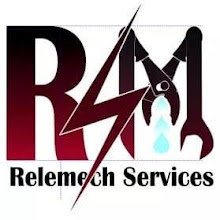Drinking salty water can have adverse effects on human health and well being. It is no wonder that our brothers from the coastal regions will always complain of lack of enough potable water. The sea water to be consumed by human and applied in various uses it must be rid of the impurities through various processes including desalination. Can it be used to produce enough water for a community?
 |
| Plenty Of Sea Water? |
What is Desalination?
This is the process of removal of salt (sodium chloride) and other minerals from the sea water to make it suitable for human consumption and/or industrial use. This was first used way back in the 4th century by Greek to evaporate sea water and create drinking water.
What Desalination technologies are there?
There are two main types of desalination processes with the most common technology employing reverse-osmosis in which salt water is forced through a membrane that allows water molecules to pass but blocks the molecules of salt and other minerals and thermal desalination which uses heat, often waste heat from power plants or refineries, to evaporate and condense water to purify it.
Reverse Osmosis(RO) Desalination
Reverse Osmosis refers to the process of removing particles and contaminants from water by pushing the water under pressure through a semi-permeable membrane by an RO plant. RO plants consists of
- High pressure pumps of 55 to 85 bars depending on temperature and salinity of the sea water.
- Energy recovery device: Pressure drop over the RO membranes being about 1.5 to 2 bar releases concentrate at high pressure thus ERD ensures reuse of the energy from the concentrate flow. The concentrate is directed to the ERD, where it directly transfers its energy to part of the incoming feed water
- RO membrane: The most common used are the spiral wound including sea water spiral wound membrane.
Reverse Osmosis works by using a high pressure pump to increase the pressure on the salt side of the RO and force the water across the semi-permeable RO membrane, leaving almost all (around 95% to 99%) of dissolved salts behind in the reject stream. The amount of pressure required depends on the salt concentration of the feed water with the more concentrated the feed water, the more pressure is required to overcome the osmotic pressure. The desalinated water that is demineralized or deionized, is called permeate (or product) water. The water stream that carries the concentrated contaminants that did not pass through the RO membrane is called the reject (or concentrate) stream.
As the feed water enters the RO membrane under pressure (enough pressure to overcome osmotic pressure) the water molecules pass through the semi-permeable membrane and the salts and other contaminants are not allowed to pass and are discharged through the reject stream (also known as the concentrate or brine stream), which goes to drain or can be fed back into the feed water supply in some circumstances to be recycled through the RO system to save water. The water that makes it through the RO membrane is called permeate or product water and usually has around 95% to 99% of the dissolved salts removed from it.
The RO plant cannot, however, remove all the contaminants in the sea water. The plants are mostly capable of removing contaminants upto 99% depenidng on their size and charge. A properly running RO plant will likely reject a particle of 200 molecular weight.( water is wieghed at 18MW). A contaminant of higher ionic charge will likely not pass through the RO system and thus gases such as CO2 are not removed by this system. Reverse Osmosis is very effective in treating brackish, surface and ground water for both large and small flows applications. Some examples of industries that use RO water include pharmaceutical, boiler feed water, food and beverage, metal finishing and semiconductor manufacturing to name a few.
 |
| Representation Of An RO Process |
The major problem with RO plants is its prohibitive costs by using large amounts of energy to power up the high pressure pumps. They impact negatively on the environment by their water intake, use of harsh chemicals to clean up the RO membranes and release of water highly concentrated in salt back in to the aquatic system.
The good news is that Engineers and innovator are looking at better ways to treat the very much available sea water. What systems are available for you locally or abroad, commercially or for domestic use?
Relemech Services LTD would size and recommend a system that would suit your individual unique needs at residential and commercial level. We would also recommend who would carry out the supply and installation of such systems under our keen supervision. Call us: +254780122255 or email: info@relemech.co.ke and we will be glad to engage you.











